Thursday, May 20th 2010

ASUS Gives Rampage III Extreme 4-way SLI Capability with ROG Xpander
ASUS has come up with a Frankenstein solution which enables 4-way SLI on the Rampage III Extreme motherboard with full PCI-Express 2.0 x16 bandwidth, called the ROG Xpander. The device is a daughterboard that sits on the motherboard with connections to its PCI-E 2.0 x16 slots. While it might not fit into cases, it is intended to work on test-benches. The two PCI-E x16 connections from the motherboard are wired to two NVIDIA nForce 200 bridge chips, which give out two x16 links each, driving the four x16 slots on the daughterboard. It takes input from one 6-pin PCI-E power input, and three 4-pin Molex inputs, though not all may be required.
The ROG Xpander ideally would draw 12W of power per nForce chip, and with its own power inputs, will not draw any power from the motherboard for the four PCI-E cards. The point of using this device is that ASUS did not give 4-way SLI capability to the Rampage III Extreme from the factory, even though it already has four PCI-E x16 slots (x8 each when all are populated). A fan seated on the Xpander ensures components on the motherboard under it aren't suffocated of cool air. ASUS ran a 4-way SLI test of four GeForce GTX 480 graphics cards on 3DMark Vantage, where the Core i7 980X @ 6 GHz powered setup scored P52422 points.And now for the price. For now it's not known, but considering that the two nForce 200 chips and 4-way SLI license from NVIDIA cost close to US $100, this device won't be cheap. Ideally expect it to be under $200, which is still not a bad value proposition considering other 4-way SLI capable motherboards such as the Gigabyte GA-X58A-UD9 cost around US $700, while the Rampage III Extreme goes for "just" $380.
Source:
NordicHardware
The ROG Xpander ideally would draw 12W of power per nForce chip, and with its own power inputs, will not draw any power from the motherboard for the four PCI-E cards. The point of using this device is that ASUS did not give 4-way SLI capability to the Rampage III Extreme from the factory, even though it already has four PCI-E x16 slots (x8 each when all are populated). A fan seated on the Xpander ensures components on the motherboard under it aren't suffocated of cool air. ASUS ran a 4-way SLI test of four GeForce GTX 480 graphics cards on 3DMark Vantage, where the Core i7 980X @ 6 GHz powered setup scored P52422 points.And now for the price. For now it's not known, but considering that the two nForce 200 chips and 4-way SLI license from NVIDIA cost close to US $100, this device won't be cheap. Ideally expect it to be under $200, which is still not a bad value proposition considering other 4-way SLI capable motherboards such as the Gigabyte GA-X58A-UD9 cost around US $700, while the Rampage III Extreme goes for "just" $380.
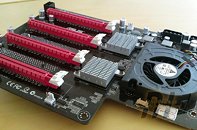
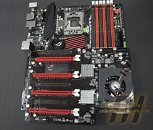
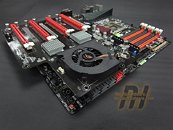
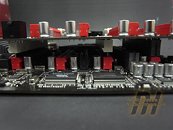
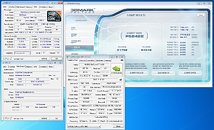
47 Comments on ASUS Gives Rampage III Extreme 4-way SLI Capability with ROG Xpander
Can i ask how you mount this in regular ATX and how do you mount GPU on box?
For the cheap seats: THIS IS NOT INTENDED TO RUN IN A CASE, ONLY FOR TEST BENCHES!!!!
It clearly states this in the article.
Source
I see that this is an upgrade to those existing user of R3E which would run 4-way SLI without buying another mobo
However, I much prefer this than 15x boards, all with the same chipset.
I think they'll be lucky to sell 100 pieces.
And benchmarking just became the stupidest thing ever now. Liek really...numbers matter that much that they invest the R&D on this, rather than decent bioses? hire another bios programmer, you silly people! Manpower is needed, not useless benchmark power!
:shadedshu
$700 can get you a Crosshair4 Formula, Phenomx6 1090T, and 4GB of ram.
:shadedshu
If I wanted Quad SLI, I'd just buy an EVGA 4x SLI Classified or a Gigabyte UD9 (don't know if it does Quad-SLI but it will do Quad Crossfire).
Absolutly idiotic solution!
No, but seriously, not even the best on-board even remotely compares to even a decent mid range sound card in sound quality. My Audigy 2ZS alone likely beats all on-board solutions in sound quality.
So, the only way a sound card is a waste of money is if you don't care about sound quality, or have speakers and headphones so crappy that it doesn't matter how good your signal is, as they are the bottleneck.